Varen grew up in the 10th century around a Benedictine monastery founded by Aurillac Abbey. The priory attracted a population. In the 19th century, after the demolition of the walls, the village expanded along the roads to Saint-Antonin and the Aveyron. Varen grew up around a Benedictine monastery founded by the Abbey of Aurillac, in a fertile meander of the Aveyron. The priory, dedicated to farming, quickly attracted a population that gave rise to a medieval village once surrounded by walls. After the walls were demolished, urban development spread along the surrounding roads. The deanery, a veritable stronghold, still bears witness to this rich past, with its defensive architecture typical of the Middle Ages. The church of Saint-Pierre, built as early as the 11th century, has preserved some exceptional sculpted capitals, while a few remains are reminiscent of the former church of Saint-Serge. Elements of the fortifications remain, in particular the Porte du Four, the last significant vestige of the enclosure. The mill on the Aveyron, rebuilt in the 19th century, even enabled the early electrification of the village in 1910. The market hall, built at the end of the 19th century, livens up the central square with its weekly market. Finally, the half-timbered houses, often built on medieval ground floors, are a reminder of the importance of the vine in local history. Varen's well-preserved heritage and natural setting make it an attractive place to explore.
-
Rates
FREE











